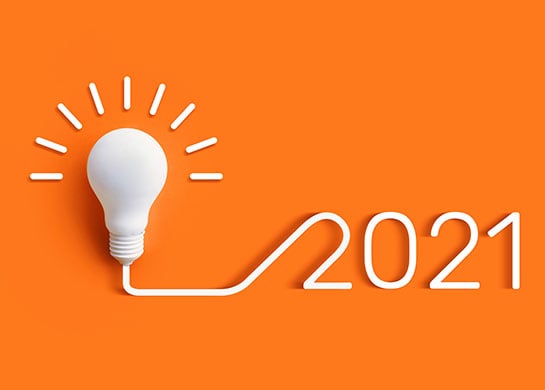Happy New Year! This familiar wish resonates now more than ever before. Reflecting back on 2020, the community banking and credit union industries should be proud of how this unprecedented pandemic and resulting economic crisis was managed. It was a truly remarkable time in which we worked together to take care of our employees, serve and support our communities, and operate our businesses efficiently despite significant challenges.
Now in 2021, we focus on moving forward - and we are well positioned to do so. The technology demands faced over the last year were tremendous, but they were not a surprise. Jack Henry has been steadily working toward building digital, user centric, and open technologies that allow community banks and credit unions to meet customer and member needs personally and at their time and location of choice. We’re constantly evaluating industry trends and developing the technology necessary to prepare financial institutions for continued success. Below are a few areas of focus in 2021:
- The Paycheck Protection Program (PPP) continues. An additional $284 billion has been approved for PPP lending, including new loan eligibility and the option for qualifying businesses to receive a second loan. Preparing for the dissemination of these funds, all while managing the forgiveness process, is top of mind for many bankers. Community banks and credit unions can continue to benefit from participating in this program by gaining and strengthening small business customers as well as playing a significant role in extending loans to minority- and female-owned businesses. In fact, in addition to facilitating the majority of the small business PPP loans in 2020, community banks originated 72.6% of PPP loans made to non-white small business owners and 71.5% of PPP loans made to female small business owners.
- Digital banking continues rapid acceleration. Digital banking adoption has reached record highs, and enhancing digital service is a top priority. The area is constantly evolving in speed, personalization and openness. The key to continued success is to stay focused on the needs of people, identify digital solutions that draw people in, engage them, and focus more on providing human-centered service in moments of need. Platforms should offer open infrastructure that makes it easy for institutions to embed their solutions of choice, preparing them for the future.
- Payments platforms take center stage. It’s critical for financial institutions to broaden their payments options, moving toward an approach that provides end users with robust features combined with an excellent experience. An integrated payments infrastructure that provides frictionless, real-time experiences will be necessary to compete with big banks and fintechs. Financial institutions will partner with vendors that can help to build the right platform for their unique customer and member preferences.
- Digital transformation in mortgage lending. Mortgages rates have dropped to record lows and the Federal Reserve has expressed no plans to change the rate environment until 2022 or beyond. Bankers must drive efficiency to compete. They need automation and seamless workflows that effectively measure credit risk and streamline previously manual processes. This empowers lenders to focus on building relationships and growing portfolios. Borrowers will benefit also from the added speed and connectivity with their lender.
- Changes in the new administration. With the pending changes in Washington, a new administration will most likely swing the pendulum back toward an environment of stricter banking regulation. Economic recovery has also been identified as a top priority by the new administration. Banks and credit unions must have agile technology and processes in place to respond; outsourcing will help many with these adjustments.
- Transparency and fairness in lending. Given the social environment in our country today, we expect a real focus this year on diversity and inclusion in banking, especially around access to fair credit and lending costs. Many organizations, Jack Henry included, have taken a formal stance in supporting racial justice and equality. Working together, we can ensure that lending clients are treated equitably.
We’re excited to embrace 2021 alongside our community of financial institution partners who are committed to doing the right thing and providing for local communities. I have great hope for the year ahead. Together we will develop joint strategies and modern technologies that drive success, both today and tomorrow.

.svg)
